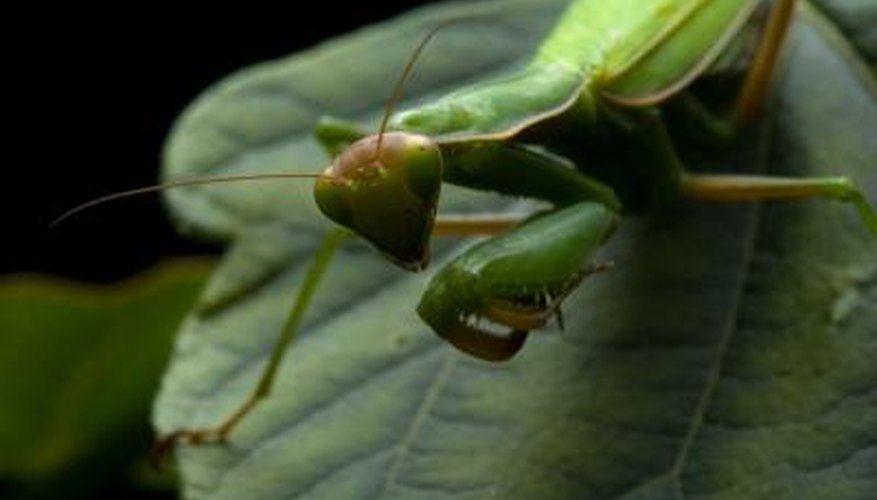Some insects, including stick insects and mantids, don't have a larval stage. Instead, they hatch as miniature versions of the adults and shed their skins as they grow. When insects moult they are vulnerable. You shouldn't handle or even disturb them at this stage, as this could seriously damage them. In the case of a praying mantis, it won't feed and prey insects could in fact damage it. For these reasons, it is helpful to know the signs of a pet praying mantis in moult. The behaviour and, to an extent, the appearance alter considerably.
- Some insects, including stick insects and mantids, don't have a larval stage.
- In the case of a praying mantis, it won't feed and prey insects could in fact damage it.
Watch to determine if your pet is eating. A praying mantis loses its appetite several days before the moult, no matter how tempting the prey items.
Observe the insect's behaviour. A few days before the moult begins, the mantis will hang upside down from a twig or leaf and remain relatively motionless.
- Watch to determine if your pet is eating.
- A few days before the moult begins, the mantis will hang upside down from a twig or leaf and remain relatively motionless.
Examine the mantis's appearance. Sometimes they develop a pale, washed-out look before the moult. This is because the old skin is detaching from the body.
TIP
You can tell when the moult is finished because the old skin will be near the insect. Give the mantis a few hours after it loses the old skin, to allow the new skin to harden, before feeding or disturbing it.
